Women Missing from Best Books Lists
Publishers Weekly set off a storm of protest last week when they released their selection of the Top Ten Books of the Year and pointed out that all the titles are by men (adding insult to injury, the editors said they didn’t see this as a reason to question their own judgment; that changing the list would be a matter of bowing to “political correctness”).
The newly-formed group WILLA (Women in Letters and Literary Arts) issued a press release amusingly titled, Why Were No Women Invited to Publishers Weekly’s Weenie Roast? and created a wiki for people to post their favorite ’09 books by women, a list that is growing by the minute. GalleyCat reports that the group is also growing, having added 1,000 new members since Wednesday.
Charlotte Abbott, who writes for EarlyWord as well as the blog Follow the Reader, is organzing a group to look into creating an American prize similar to the Orange Prizes in the UK, which are for women writers in English (Americans are eligible; Marilynne Robinson won the Fiction prize for her 2008 book, Home).
The outrage has focused on Publishers Weekly, because they had the temerity to announce their lack of female authors. However, Amazon’s Editor’s Top Ten includes only two women, one of whom is a YA author (PW does not included children’s and YA authors on their list). If, for comparison’s sake, we exclude the YA title, #11 on Amazon’s list is by a man, so only one female author appears on Amazon’s list of Top Ten adult titles.
Women do better with the National Book Awards; of the fifteen finalists in the adult categories, 6 are women.
Amazon and PW also issued Top 100 lists and we were curious to see how women fared on them. To that end, we’ve created a spreadsheet with all the titles (available on the right, under “Best Books ’09; List of the Lists — Spreadsheet) as well as one with just the titles by women (List of the Lists; Women Authors). As the lists show, women make out somewhat better on the full lists, but still represent just 30% or less of the titles:
Of PW‘s Top 100, 30 are by women (we included Half the Sky because the co-author is a woman) = 30%
Of Amazon’s 100 titles, 25 are by women = 25%
If you remove the childrens/YA titles from Amazon’s list to make it more comparable to PW‘s, the total is 94 titles, with 19 by women = 20.20%
Clearly, PW is not alone in underrepresenting women.
In childrens and YA, women fare much better, but it’s difficult to say how this compares with the proportion of women who publish childrens and YA titles;
Of the 30 titles on PW‘s childrens list, 19 are by women = 63.33%
Of the 30 on Amazon’s list, 15 are by women = 50%
There are, of course, many other issues to discuss with “best” lists. PW covers categories that are overlooked elsewhere, such as graphic format and mass market titles. They also give attention to the lesser known; one writer found the PW list refreshing (We can’t help but note that that writer is a “he”);
“Publisher’s Weekly announces 10 best books of the year – ALL by men“, by Oliver Marre, The Telegraph
…the PW list is more interesting for its joyful disregard of the trendy highbrow authors of 2009 – be they men or women. It shows an admirable indifference to the efforts of the Booker prize nominees like Byatt (whose Children’s Book was extraordinarily heavy going), the omnipresent Sarah Waters and her ghosts, even Hilary Mantel and her epic bestseller (I tried it twice but couldn’t get excited), Wolf Hall. With each of these exclusions, I cannot help agreeing.

November 14th, 2009 at 9:28 am
To put this in perspective for me, can you tell me what percentage of published authors are female? How significantly might that number change leaving out children’s and YA authors?
November 16th, 2009 at 5:51 pm
[…] As to the women authors; two of the top five are women, and 9 of the total 25, which works out to 36% of the list, a higher ratio than the other lists. […]